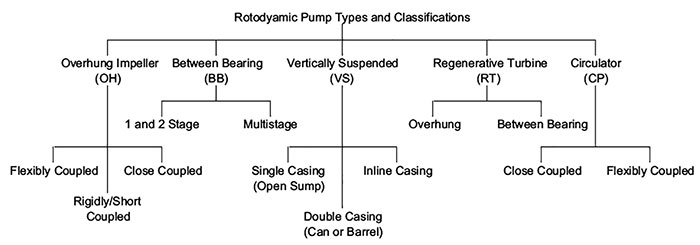Rotodynamic pumps include centrifigual, mixed and axial flow pumps.
02/27/2019
Q: I am used to hearing the term “centrifugal” pump, but sometimes hear them referred to as “rotodynamic” pumps. Can these terms be used synonymously? A: Rotodynamic pumps are kinetic machines in which energy is continuously imparted to the pumped fluid by means of a rotating impeller, propeller or rotor. These pumps transfer mechanical energy to the fluid primarily by increasing the fluid kinetic energy. Kinetic energy is then converted into potential energy (pressure) in the discharge collector. The most common types of rotodynamic pumps are radial (centrifugal), mixed flow and axial flow (propeller) pumps, including pumps historically referred to as vertical turbine pumps. Radial, mixed and axial flow impellers are shown in Image 1.
 Image 1. Radial (centrifugal), mixed and axial flow impellers (Images courtesy of the Hydraulic Institute)
Image 1. Radial (centrifugal), mixed and axial flow impellers (Images courtesy of the Hydraulic Institute) Image 2. Rotodynamic pump types by classification
Image 2. Rotodynamic pump types by classification
